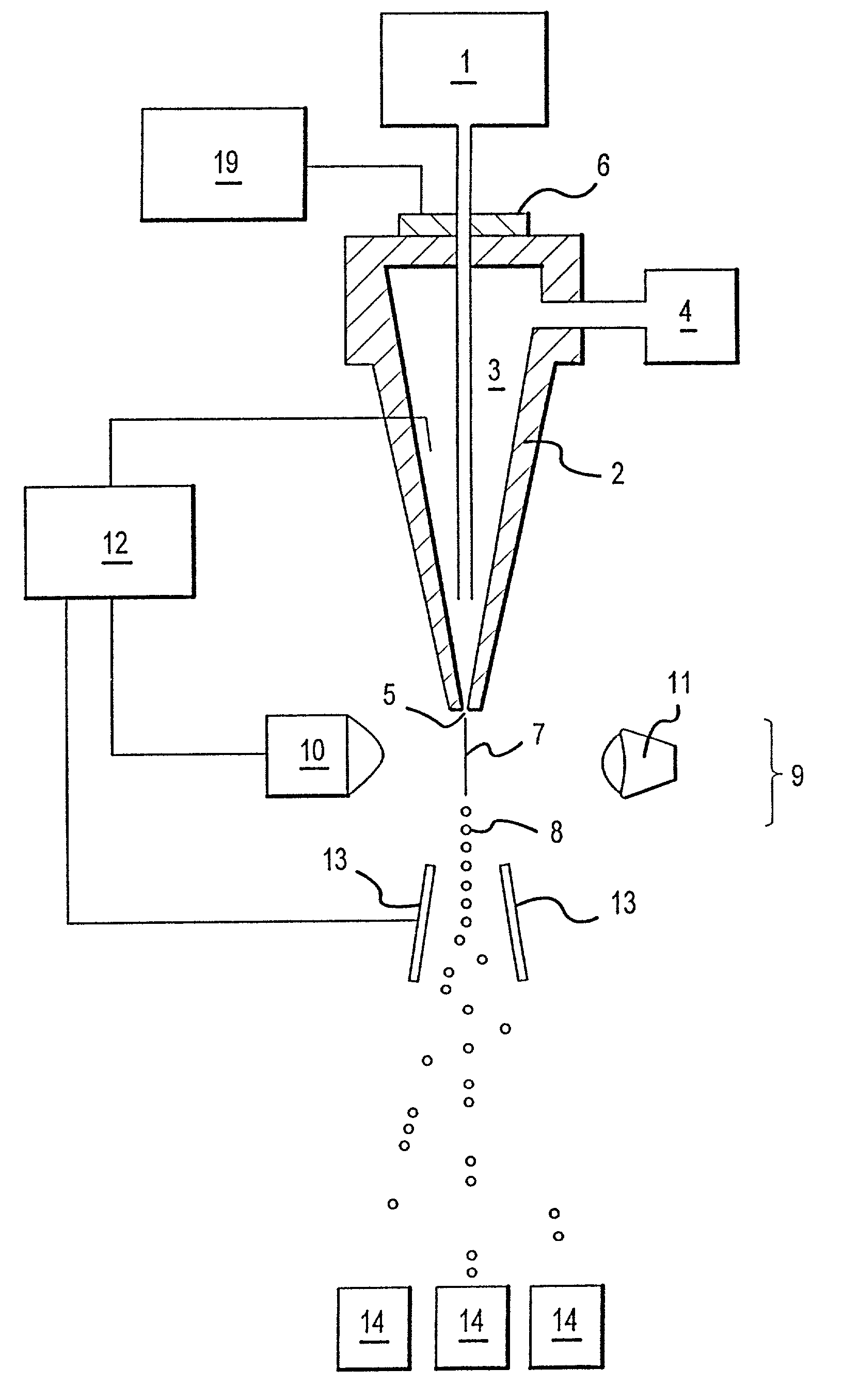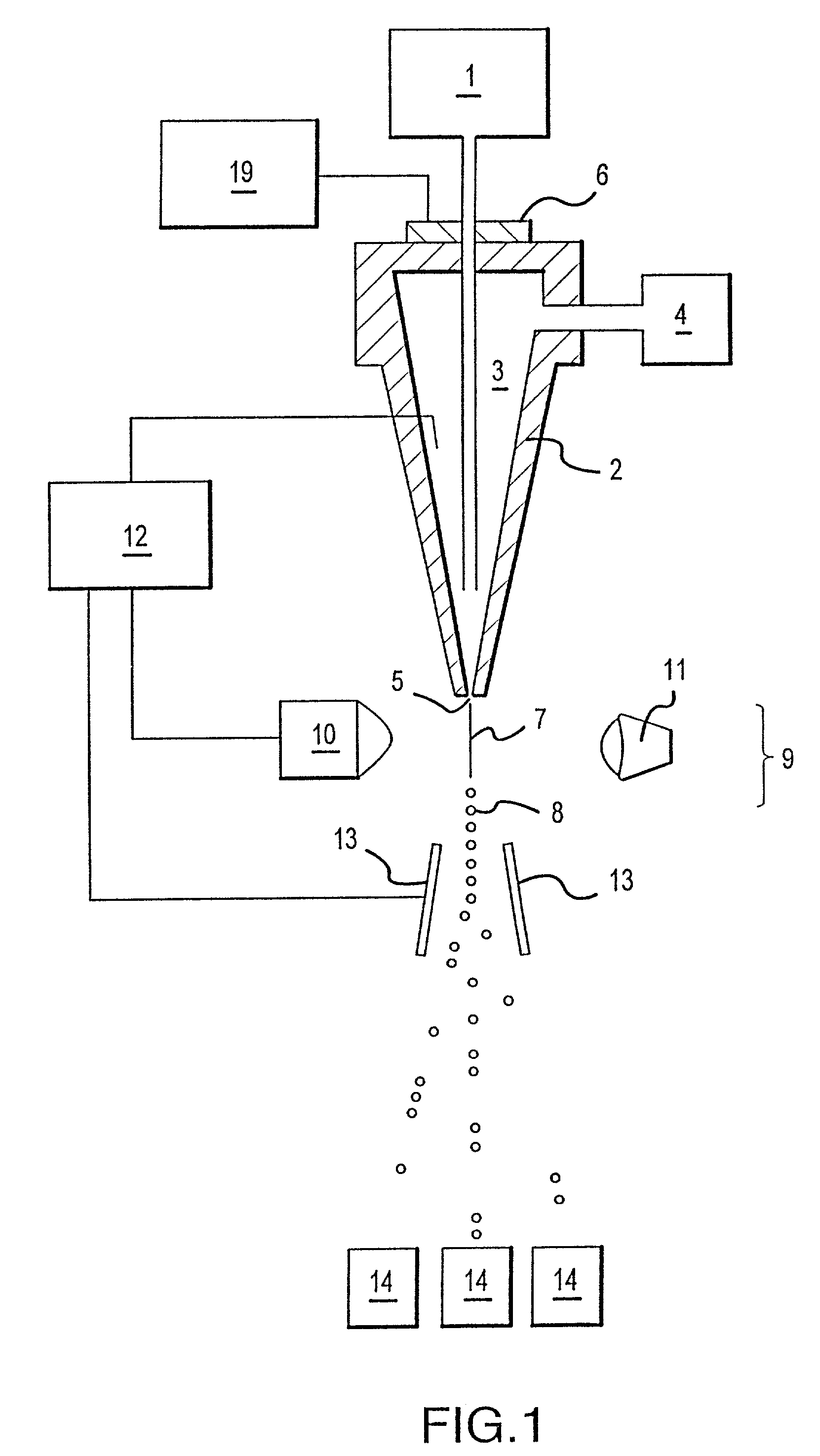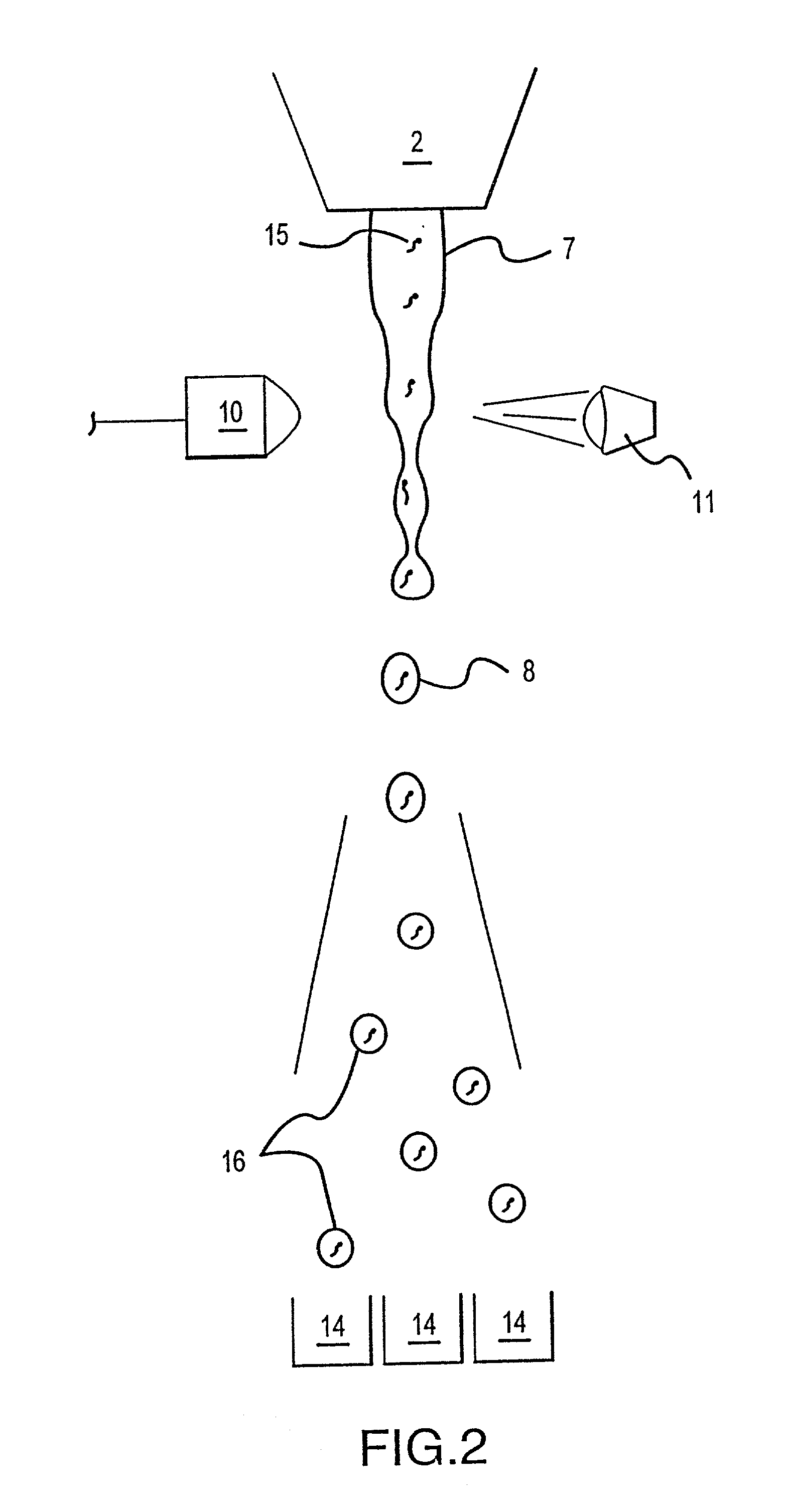Multiple sexed embryo production system for mammals using low numbers of spermatozoa
a multi-sexed, embryo-producing technology, applied in the field of mammals with multiple sexes, can solve the problems of large number of sperm involved, inability to achieve the desired level of sex presélection, and remained certain problems, so as to minimize both physical and chemical stress, the effect of minimizing the stress on the sperm cells
- Summary
- Abstract
- Description
- Claims
- Application Information
AI Technical Summary
Benefits of technology
Problems solved by technology
Method used
Image
Examples
example 1
[0105] Angus heifers 13-14 mo of age and in moderate body condition, were synchronized with 25 mg of prostaglandin F-2 alpha at 12-day intervals and inseminated 6-26 h after observed standing estrus. Freshly collected semen from three 14-26 mo old bulls was incubated in 38 .mu.M Hoechst 33342 at 75.times.10.sup.6 sperm / ml in a TALP medium for 1 h at 34.degree. C. Sperm were sorted by sex chromosomes on the basis of epiflourescence from laser excitation at 351 and 364 nm at 150 mW using a MoFlo.RTM. flow cytometer / cell sorter operating at 50 psi and using 2.9% Na citrate as sheath fluid. X chromosome-bearing sperm (.about.90% purity as verified by resorting sonicated sperm aliquots) were collected at .about.500 live sperm / sec into 2-ml Eppendorf tubes containing 100 .mu.l Cornell Universal Extender (CUE) with 20% egg yolk. Collected sperm were centrifuged at 600.times.g for 10 min and resuspended to 1.63.times.10.sup.6 live sperm / ml in CUE. For a liquid semen unsexed control; Hoechst...
example 2
[0108] The objective was to determine pregnancy rates when heifers are inseminated with extremely low numbers of frozen sperm under ideal field conditions. Semen from three Holstein bulls of above average fertility was extended in homogenized milk, 7% glycerol (CSS) extender plus 5% homologous seminal plasma to 2.times.10.sup.5, 5.times.10.sup.5 or 10.times.10 .sup.6 (control) total sperm per 0.25 ml French straw and frozen in moving liquid nitrogen vapor. Semen was thawed in 37.degree. C. water for 20 sec. Holstein heifers 13-15 mo of age weighing 350-450 kg were injected with 25 mg prostaglandin F-2-alpha (Lutalyse.RTM.) twice at a 12-day interval and inseminated with an embryo transfer straw gun and sideopenig sheath, half of the semen deep into each uterine horn 12 or 24 h after detection of estrus. The experiment was done in five replicates over 5 months, and balanced over two insemination technicians. Ambient temperature at breeding was frequently -10 to -20.degree. C., so car...
example 3
[0110] Semen was collected from bulls at Atlantic Breeders Cooperative, diluted 1:4 with a HEPES-buffered extender .div.0.1% BSA, and transported 160 km (-2 HR) to Beltsville, Md. where it was sorted at ambient temperature by flow cytometry into a TEST yield (20%) extender using methods described previously (Biol Reprod 41:199). Sorting rates of up to 2.times.10.sup.6 sperm of each sex per 5-6 h at -18 90% purity were achieved. Sperm were concentrated by centrifugation (300 g for 4 min) to 2.times.10.sup.6 sperm / ml. Some sperm were sorted into extender containing homologous seminal plasma (final concentration, 5%). Sorted sperm were shipped by air to Colorado (.about.2,600 km) and stored at either ambient temperature or 5.degree. C. (cooled during shipping over 6 hr in an Equitainer, an insulated device with an ice-containing compartment). Heifers or dry cows detected in estrus 11 to 36 h earlier were inseminated within 9 to 29 h of the end of the sperm sorting session. Sperm (1 to ...
PUM
| Property | Measurement | Unit |
|---|---|---|
| pressure | aaaaa | aaaaa |
| oscillator frequencies | aaaaa | aaaaa |
| oscillator frequencies | aaaaa | aaaaa |
Abstract
Description
Claims
Application Information
 Login to View More
Login to View More - R&D
- Intellectual Property
- Life Sciences
- Materials
- Tech Scout
- Unparalleled Data Quality
- Higher Quality Content
- 60% Fewer Hallucinations
Browse by: Latest US Patents, China's latest patents, Technical Efficacy Thesaurus, Application Domain, Technology Topic, Popular Technical Reports.
© 2025 PatSnap. All rights reserved.Legal|Privacy policy|Modern Slavery Act Transparency Statement|Sitemap|About US| Contact US: help@patsnap.com



